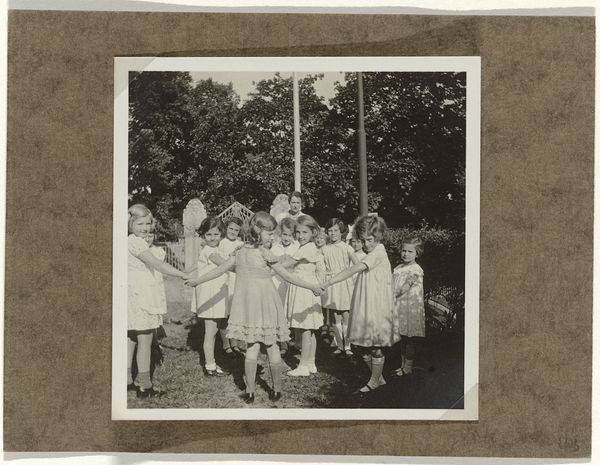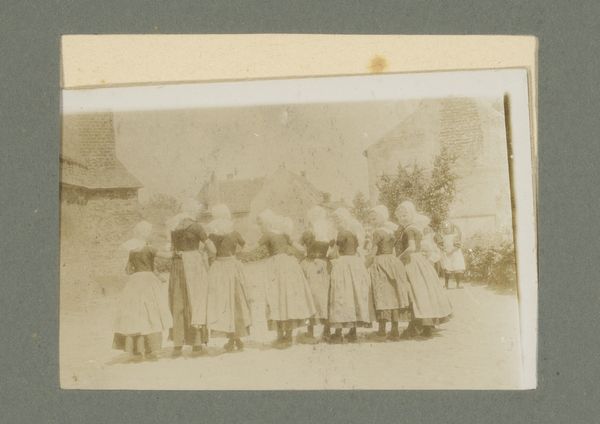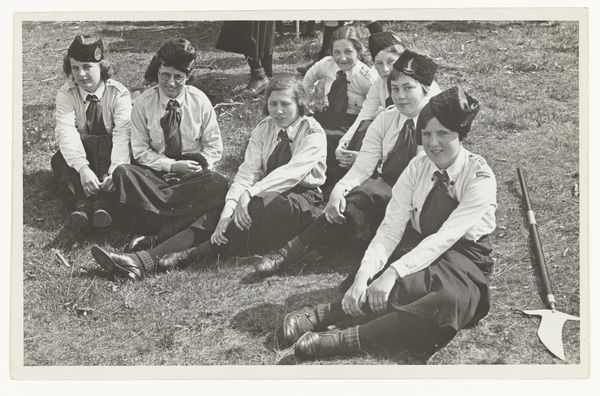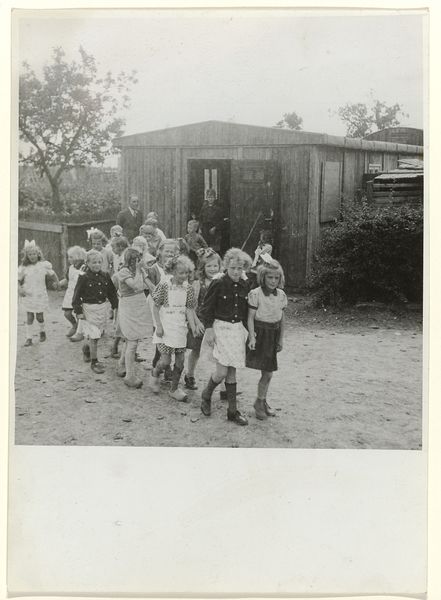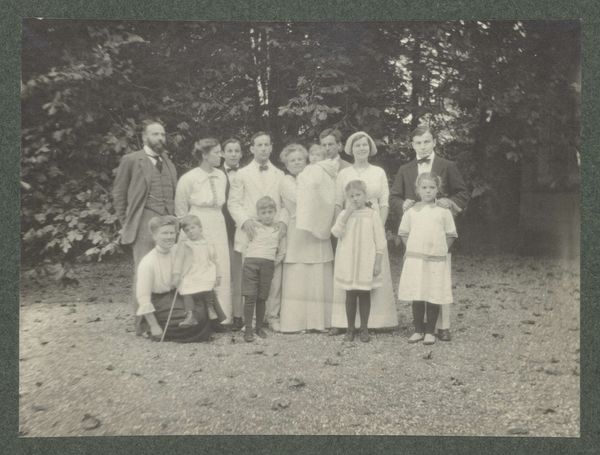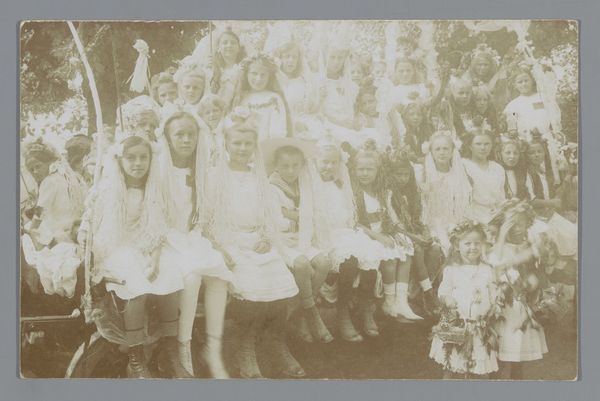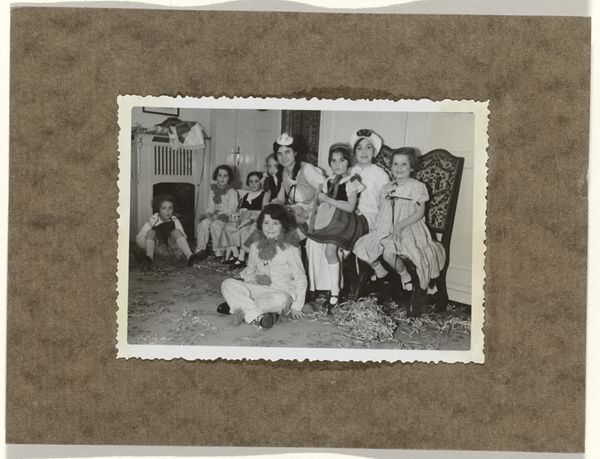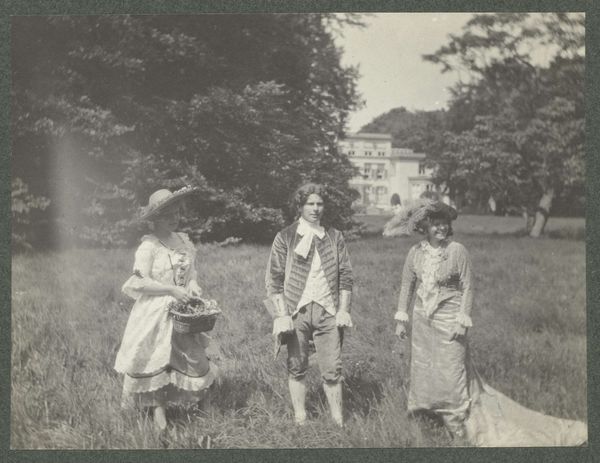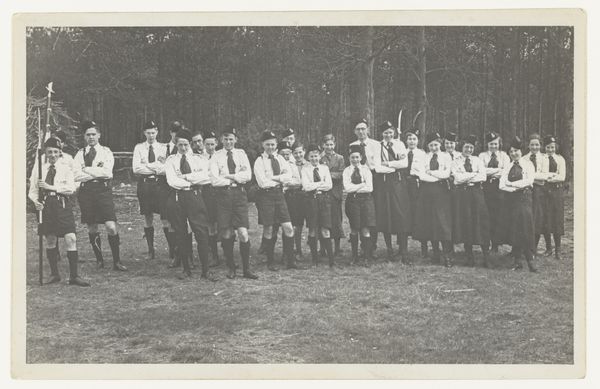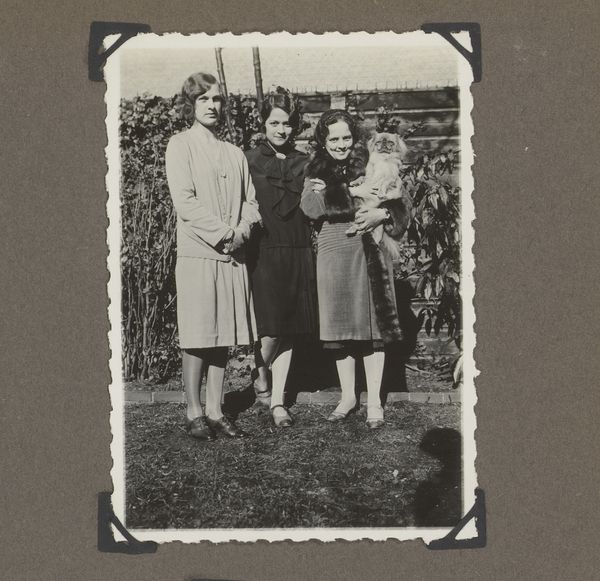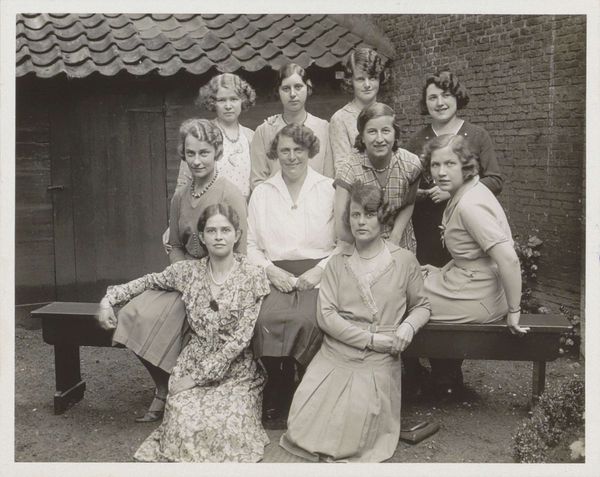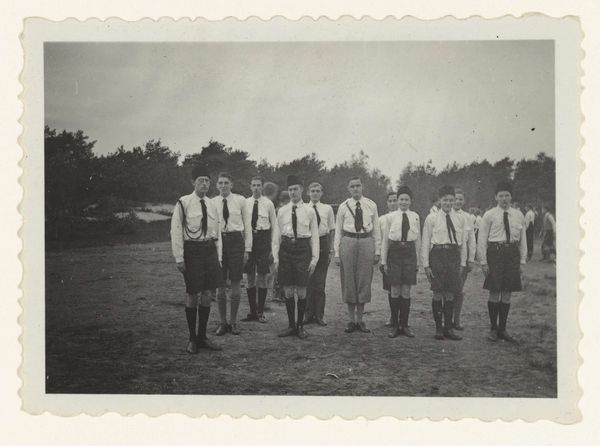
Isabel Wachenheimer met onbekende kinderen op een kinderfeestje in een tuin 1932 - 1934
0:00
0:00
photography, gelatin-silver-print
#
archive photography
#
photography
#
historical photography
#
historical fashion
#
gelatin-silver-print
#
genre-painting
#
history-painting
#
modernism
Dimensions: height 90 mm, width 90 mm
Copyright: Rijks Museum: Open Domain
Editor: This gelatin-silver print from between 1932 and 1934, titled "Isabel Wachenheimer met onbekende kinderen op een kinderfeestje in een tuin" – Isabel Wachenheimer meeting unknown children at a garden birthday party - is just striking. It captures this very specific moment, a seemingly innocent snapshot, yet I can't help but feel a sense of unease looking at it. What’s your take? How do you interpret this work? Curator: It's a deceptively simple image, isn't it? But the act of documenting a children's birthday party during that period has political resonance, specifically when considered from an intersectional perspective. We must ask, whose children are being photographed? The date places it within the rise of Fascism, a time of increasing persecution of Jewish people. Consider the implications of recording such a gathering, potentially endangering the subjects if the photographer or subjects were Jewish. The photograph becomes evidence, but of what? Joy? Childhood? Or the quiet defiance of maintaining normalcy under duress? Editor: So you're suggesting that the very act of taking the picture becomes a political statement, even if unintentional? Curator: Precisely. Furthermore, examining the subjects closely raises uncomfortable questions about the politics of representation. What do the children's poses and expressions convey? Does the photographer's framing normalize or challenge the existing social hierarchies? We should also reflect on how the legacy of such an image, preserved as an "archive photograph", speaks to collective memory. Editor: It definitely makes me look at the image differently. I hadn’t thought about the potential risks involved just taking it. I see what you mean; the picture is much more loaded than it initially appears. Curator: And it’s a reminder that archives themselves aren’t neutral spaces. They’re curated narratives reflecting specific power dynamics and ideological viewpoints. Now consider, what responsibility do we have in re-interpreting them today? Editor: I’ll need to do some thinking to work through that question. I am definitely seeing the image in an expanded cultural context now! Thanks.
Comments
No comments
Be the first to comment and join the conversation on the ultimate creative platform.
